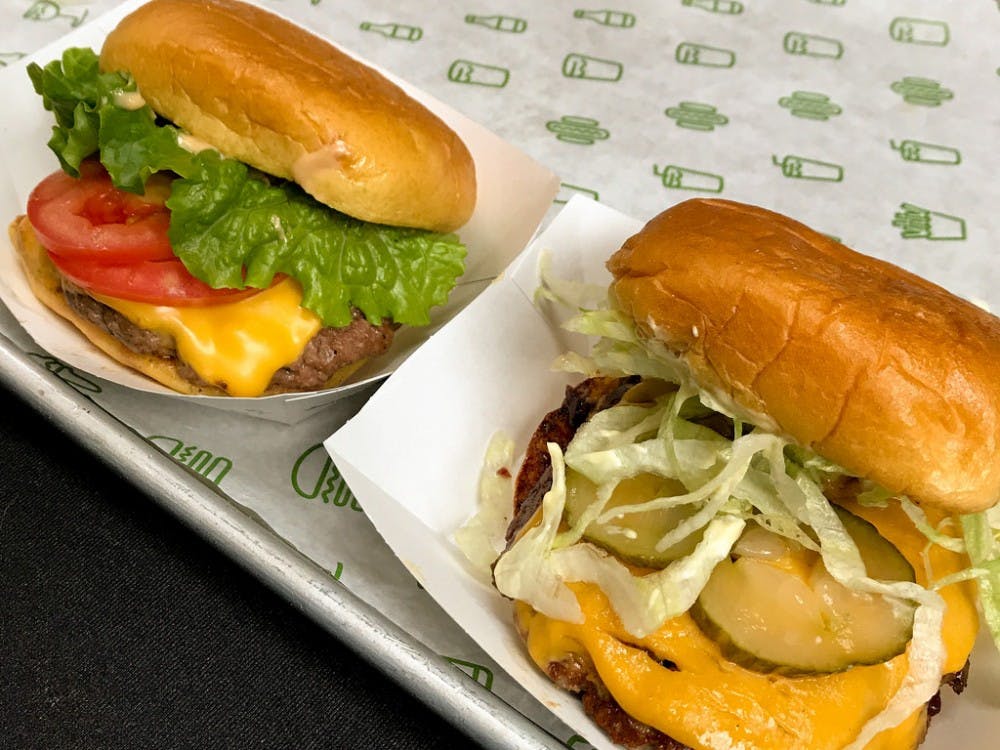Out of 25 of the most popular fast-food burger chains, 23 received an F grade from Chain Reaction, an annual review on the antibiotic-use policies in the beef preparation.
The report was a collaborative effort between the Natural Resources Defense Council, Consumer Reports, U.S. Public Research Interest Group Education Fund, Friends of the Earth, Food Animal Concerns Trust and Center for Food Safety. These are all nonprofit advocacy groups which seek to promote, among other goals, fair and sustainable treatment of animals.
The coalition gathered data on the 25 largest fast-food and fast-casual restaurant chains in the U.S. They sent out surveys via mail and email, which included questions about the antibiotic-use policy, policy implementation, and if a third party audits and verifies policy compliance. Seven chains responded to the survey. For the other chains, the organizations used information from company websites, annual reports and other public data .
Shake Shack and BurgerFi earned A ratings because both chains use beef without any antibiotics. The other 23 chains, including McDonald’s and Burger King, received F ratings because they lack policies that limit the use of beef raised without routine use of antibiotics.
Lena Brook, a lead researcher of the report, revealed her view of antibiotic treatment to animals.
“Sometimes, antibiotics are used to treat sick animals, and that’s great, we are 100 percent supporting of that, and they are a really important part of the veterinary tool kit,” Brook said, according to CNN. “But unfortunately, oftentimes, they are also given to animals either to promote faster growth or for the so-called disease prevention purpose.”
According to the authors, the aim of the report is to spur changes in the meat industry overall. Burger chains hold enough purchasing power in the beef industry that if they feel compelled to end the use of antibiotics in supply networks, other restaurant sectors may likely follow.
“When top restaurant chains voluntarily commit to ending the routine use of antibiotics in their supply networks, they can ignite broader change in practices across the meat industry,” Brook and Johnson wrote in a separate, shorter report published by the Natural Resources Defense Council.
Decreasing antibiotic use in beef supply chains is important, according to the main report, because routine antibiotic use leads to antibiotic-resistant bacteria and subsequently hinders the effectiveness of certain medicines to treat illnesses in humans and animals.
“If we don’t rein in this pattern of antibiotic resistance in bacteria, what we will see is half a century of medical progress reversed,” Brook said, according to CNN.
In the 2017 report, only two chains, Chipotle Mexican Grill and Panera Bread, received A ratings. Of the 25 restaurants surveyed, 11 received failing grades. The year before, 16 failed. The 2018 report was a little different than previous ones.
Last year, the authors of the report noted that progress to reduce or eliminate the use of antibiotics occurred mostly in chicken production. So while previous reports considered overall meat preparation, including chicken and pork, the 2018 report only considered beef.
“Many companies have committed to ending or restricting the use of medically important drugs in chicken supply chains. Unfortunately, when it comes to beef and pork, we’ve seen little in the way of meaningful change,” Brook and Johnson wrote.
Federal departments have crafted regulations and recommendations for safe and effective antibiotic-use in the meat industry.
The U.S. Department of Agriculture’s Food Safety and Inspection Service (FSIS) oversees the U.S. National Residue Program (NRP) which evaluates the use of chemical compounds in food animals. It tests meat and poultry samples for the presence of chemical compounds in excess of the established regulation.
NRP works with federal laws that regulate the safety of antibiotics and the timing of dosages administered to the animals to ensure the residues do not linger in consumed meat.
Earlier this year, the FDA banned the use of antibiotics meant to promote growth. There are currently no regulations to restrict the administration of routine, preventative doses of antibiotics meant to ward off illnesses that arise from the animals’ close living quarters.
However, in September, the FDA’s Center for Veterinary Medicine released its five-year plan to eliminate use of medically important microbes.
“This phased approach will allow for adjustments based on critical, science-based analysis, public health impact, and feedback from stakeholders,” the FDA wrote in a press release.
There is a growing demand for antibiotic-free meat among consumers. According to a 2016 report by Nielsen, sales of antibiotic-free meat grew nearly 29 percent each year between 2011 and 2015. In response, McDonald’s began serving chicken raised without human antibiotics. Others in the restaurant industry have expressed interest in following suit.
Public health and environmental groups hope that the report, combined with consumer preference, will put pressure on the meat and grocery industries to sell products with lower levels of antibiotics.





